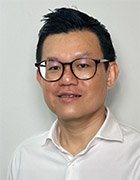
vladimircaribb - stock.adobe.com
NUS supercomputer enters global Top500
Dubbed Hopper, the supercomputer can perform 25 quadrillion calculations per second and is already fast-tracking research in fields from biomedical engineering to clean energy applications
A supercomputer at the National University of Singapore (NUS) has made it into the coveted Top500 list of the world’s most powerful supercomputers.
Dubbed Hopper, the supercomputer was placed 105th on the most recent list, which was released in June 2025. It is also Singapore’s highest-ranked supercomputer and the only one managed by a university in Southeast Asia to make the cut, a significant achievement for the country’s academic research capacity.
Hopper is capable of performing 25 quadrillion calculations per second, or 25 petaflops. For comparison, a researcher performing one calculation per second would need millions of years to accomplish what Hopper performs in just one second.
That amount of compute capacity is already being used to support ambitious, data-intensive research projects across the university that were previously constrained by time or computing power.
One such project focuses on next-generation battery design for clean energy. Deng Zeyu, an assistant professor from NUS’s department of materials science and engineering, is using Hopper to do large-scale quantum mechanical calculations and complete complex simulations up to 12 times faster than with traditional systems.
“Tasks that used to take three months now take a week,” said Deng. “It’s like switching from a bicycle to a high-speed train – Hopper has completely transformed our research pace and possibilities, allowing us to explore new frontiers in battery technology.”
In the realm of artificial intelligence (AI), assistant professor Mike Shou from NUS department of electrical and computer engineering described Hopper as a “game-changer” for his research into developing new methods for machines to understand actions and complex events in videos.
“Its powerful performance and system stability have laid a solid foundation for our work in video generative AI,” he said. “We can now generate both short-form and long-form videos and build multimodal agents that operate across a wide range of previously unseen environments.”
Shou’s work has the potential to fuel applications ranging from perception systems for self-driving cars to intelligent video creation tools for journalists and filmmakers.
Hopper is also driving advances in biomedical engineering. SurgVLM, a vision-language model meant to facilitate surgical intelligence, was developed by assistant professor Jin Yueming and her colleagues from the university’s department of biomedical engineering using the supercomputer.
“Hopper’s Nvidia H100 GPU [graphics processing unit] nodes and the high-speed InfiniBand network have been instrumental to our key experiments,” said Jin, noting that the model could one day provide real-time cognitive assistance during surgery and aid in robotic procedures.
The supercomputer was designed by the high-performance computing (HPC) and AI team at NUS Information Technology (NUS-IT) and built with infrastructure from Dell Technologies. By providing shared, centralised access to its advanced computing power, the university hopes to level the research playing field, enabling even smaller teams to tackle more complex challenges.
The system is expected to support up to 120 active research projects by the end of 2025.
Rikky W. Purbojati, who leads the HPC and AI team at NUS IT, said Hopper’s inclusion in the Top500 list underscores the university’s commitment to research excellence.
“This milestone marks the beginning of a new chapter,” Purbojati said. “With Hopper, NUS researchers can dream bigger, advance faster, and solve the complex problems of our time.”
In October 2024, the Singapore government said it would invest S$270m to develop the country’s national supercomputing infrastructure and strengthen the National Supercomputing Centre (NSCC) Singapore’s capabilities to support local research.
The financing followed the inauguration of NSCC’s Aspire 2A and 2A+ supercomputing systems, which were designed to support advancements in areas such as climate research, healthcare and AI.
The National Environment Agency has used the two supercomputers to create Southeast Asia’s highest-resolution climate simulation, downscaling global climate models from 100 km to 2 km over Singapore. Reducing 3,000 years of climate data to just four years, the simulation provides insights to help governments and companies plan for extreme weather, heat stress and rising sea levels.
Read more about high performance computing in APAC
- The compute and energy demands of large-scale AI are turning enterprise AI infrastructure into supercomputing, though the search for a killer app and concerns over initial infrastructure costs remain.
- Singapore’s national AI programme is getting its own high-performance computing infrastructure to support more compute intensive workloads.
- Microsoft is moving past the noisy, intermediate-scale quantum era, focusing on building a fault-tolerant supercomputer as it looks to democratise quantum computing and speed up scientific discovery.
- Pharmaceutical and biotech companies in APAC are accelerating genomics research, but HPC infrastructure that supports workloads such as precision medicine and drug discovery remains a work in progress.









